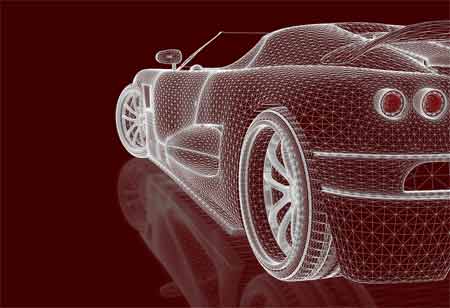THANK YOU FOR SUBSCRIBING
THANK YOU FOR SUBSCRIBING
Be first to read the latest tech news, Industry Leader's Insights, and CIO interviews of medium and large enterprises exclusively from Auto Tech Outlook

By
Auto Tech Outlook | Friday, November 15, 2024
Stay ahead of the industry with exclusive feature stories on the top companies, expert insights and the latest news delivered straight to your inbox. Subscribe today.
Connected vehicle technology powered by IoT enhances safety, efficiency and convenience while transforming the automotive industry through software-defined cars and cloud connectivity for improved driving experiences.
FREMONT CA: The Internet of Things (IoT) is reshaping road journeys worldwide, with connected vehicle technology playing a central role in this transformation. By leveraging real-time data, road operators, fleet managers, and drivers can optimise vehicle performance, reduce operational costs, and enhance safety. As IoT applications expand, connected vehicles are becoming more integral to improving transportation systems and providing valuable insights into vehicle performance and road conditions.
Connected vehicle technology enables vehicles to communicate with other systems and services powered by embedded cellular connectivity. This technology supports various functions, from emergency communications, such as the eCall system in Europe, to everyday vehicle services like GPS navigation and infotainment.
The automotive industry is significantly shifting as vehicles evolve from hardware-driven to software-defined systems. Traditionally, cars were fully assembled before reaching consumers. However, the software-defined car continues to develop and improve over time. Cloud connectivity allows for seamless software updates, remote diagnostics, and performance enhancements, ensuring vehicles remain adaptable to new technologies and driving requirements. This shift emphasises the importance of cloud connectivity and back-end systems in maintaining the vehicle's relevance throughout its lifecycle.
Connected Car IoT Applications and Market Growth
A large portion of cars sold globally featured embedded connectivity, with projections indicating that by 2030, more than 90 per cent of connected vehicles will incorporate 5G technology. This advancement is paving the way for a broader range of services, including Advanced Driver Assistance Systems (ADAS) and fully autonomous vehicles. IoT applications in connected cars will include high-demand infotainment systems, usage-based insurance models, and various third-party apps that enhance the driving experience.
Enhancing the Consumer Driving Experience
Connected vehicles offer numerous benefits to consumers, including convenience, safety, and entertainment. With connectivity, drivers can remotely control their cars through smartphone apps, enabling functions such as locking doors, starting engines, or adjusting climate settings. These features provide peace of mind and convenience, particularly on cold mornings or when locating a parked car. Real-time data transmission enhances navigation, traffic updates, and vehicle diagnostics, contributing to safer and more efficient driving.
The Roadblocks to 5G in Connected Vehicle Technology
ADAS and automated driving rely heavily on the ultra-reliable, low-latency communication capabilities that 5G offers. However, the widespread deployment of 5G along significant roads is still in its early stages, limiting the ability to support these advanced services fully. Currently, many connected vehicle services are constrained by the bandwidth and throughput offered by 4G technologies. While 4G can support various infotainment features, in-car software updates, and various services, the next generation of digital cockpits will require 5G, alongside satellite communication, to provide precise positioning and real-time data access.
The Evolving Business Model for Connected Vehicles
The business model surrounding connected vehicles is still in development. Car manufacturers are currently focused on embedding connected vehicle technology into their models, positioning themselves as the gatekeepers of this innovation. One of the significant challenges with introducing such technology into vehicles is their long life cycle, which can result in cars containing outdated systems only a few years after production. This raises important considerations about the retrofitting and upgrade potential of systems deployed today, ensuring that vehicles stay current as technology advances.
Connectivity also plays a pivotal role in enhancing in-car entertainment. Connecting vehicles transforms the car into a multimedia hub by offering streaming music, podcasts, and internet browsing. As cars become more integrated with digital lifestyles, drivers and passengers can enjoy a seamless experience on the road. Additionally, the data-driven approach provided by IoT connectivity improves the driving experience and contributes to safer journeys by delivering real-time insights into vehicle health and road conditions.
As the automotive industry continues to evolve with software-defined cars and cloud connectivity, the potential for connected vehicles to improve transportation systems, optimise vehicle performance, and drive innovation is immense. As connectivity becomes more integral to the driving experience, the future of connected vehicles promises safer, more efficient, and more enjoyable journeys, reshaping tomorrow's roadways.
 Copyright © 2025 AutoTech Outlook. All Rights Reserved | Privacy Policy | Subscribe | Sitemap | About us | Feedback Policy | Editorial Policy
Copyright © 2025 AutoTech Outlook. All Rights Reserved | Privacy Policy | Subscribe | Sitemap | About us | Feedback Policy | Editorial Policy 



